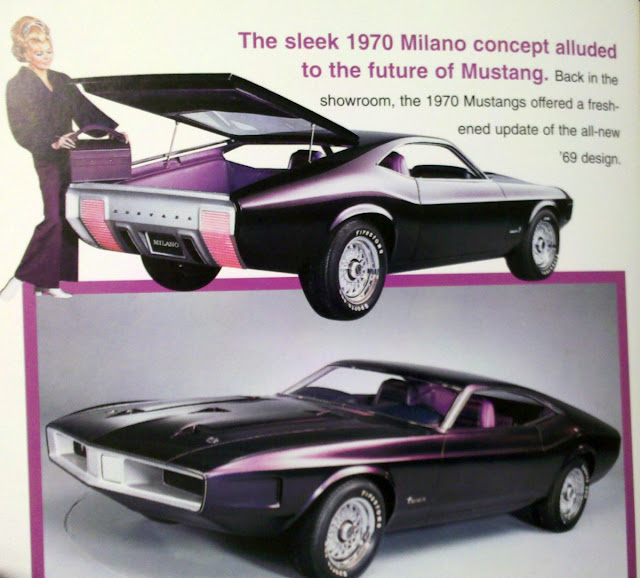In the late 1960s leading into the 1970s, Ford was intent on coming up with an Italian influenced car. Most of the Ford prototypes had Italian names and Henry Ford II, chairman of the board, had an Italian wife. Ford was tied to DeTomaso, Ford even bought Carrozzeria Ghia from DeTomaso. So that explains this long lost hatchback show car which seems one part Shelby and two parts a new shape on the side which ironically seems to have shown up on the Dodge Challenger decades later.
In February 1970, Ford kicked off a new decade at the Chicago Auto Show with a wild-looking Mustang concept car that previewed some of the design direction for the upcoming 1971 models. The exceptionally low-slung, two-seat Ford Mustang Milano took inspiration from the grand touring cars that regularly prowled the roads around the northern Italian city that gave the car its name.
The color was called Ultra Violet, a moniker used by in real life Isabelle Collin Dufresne, a French-born artist, actress and author, the reigning beauty among the superstars of Andy Warhol’s glory days at his studio.
The car was low cut–43 inches tall, three inches taller than a GT40, and had a nearly horizontal fastback roof. The windshield was sloped back at a 67-degree angle probably as close as you can get to legal. The NACA-style ducts in the hood were modern thinking after the ’60s cars had bulbous hood scoops.
Ford wasn’t into offering mag wheels, except on Shelby Mustangs and the by then discontinued Cobra, but this one had cast-aluminum wheels, with a laced design reminiscent of classic wire wheels. The seats were light purple leather with blue-violet cloth inserts. Deep purple mohair carpeting covering the floor just screams 1970. This was from the days when Peter Max, with his wildly pigmented pop art posters, was a sensation in the art world.
You could stretch it and say future Mustangs used some of the design cues but also said to benefit was the the Australian-market 1974 Falcon XB coupe, the car driven by the title character in the first two Mad Max films.
This design is lithe and purposeful compared to the awkward 1971 Mustang. It had some weird quirks perhaps best forgotten like tail lights glowing green when accelerating, amber when coasting, and red when braking.
(via My Car Quest)












0 comments:
Post a Comment